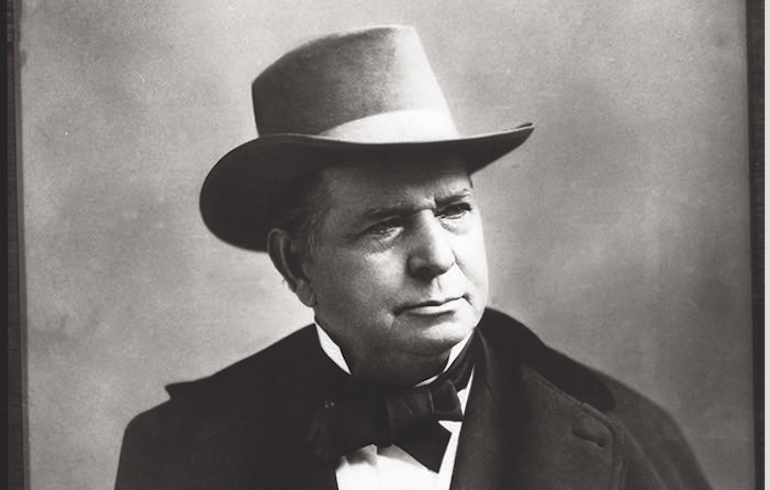A Man Named Oliver Winchester – From Shirt Maker to Iconic American Figure
The .300 Winchester Magnum, the .270 Winchester, the .243 Winchester, the . 308 Winchester, the .338 Winchester Magnum; besides being some of the most beloved cartridges of all time, what else do these calibers have in common?
They’re all named after a man who never designed a cartridge or built a firearm in his life. Oliver Winchester wasn’t a gun builder, but he was one heck of a smart businessman—perhaps one of the most brilliant and forward-thinking of his time.

His perceptive investments in the mid-19th century changed history and led to the Winchester brand becoming an American icon—an icon that has been living on now for 150 years. Winchester is celebrated in novels, Hollywood movies and hunting camps from Alaska to Argentina. When the word Winchester pops up, most people instantly think of guns and ammunition, even those people who aren’t shooters.
From Shirts to Shooters
Oliver Winchester was born in Boston in 1810, worked as a carpenter, ran a men’s clothing store and in 1848 started a dress shirt manufacturing company. Not the pedigree you would expect from what would become the biggest name in the shooting and outdoors world. Like many men of that era, Winchester was interested in guns and hunting, and as a man of means and curiosity, he took interest in the developments of the Volcanic Repeating Arms Company.
That company was instrumental in the development of the first lever-action rifle. In fact, he was so interested in their creation, he invested in the company in 1855, became principal stockholder a few years later and eventually changed the name to New Haven Arms Company.
The Volcanic Arms lever-action functioned fairly well as a repeating rifle, but the ammunition it fired did not. The loads used in this rifle were hollow-core bullets filled with gun powder and capped with a percussion cap in the rear. The small dose of powder produced less punch than that of a typical .22 Long Rifle cartridge of today.
Winchester’s factory superintendent, gunsmith Benjamin Tyler Henry, worked to improve the Volcanic and in 1860 was granted a patent for what became the Henry rifle.
It fired a 200-grain bullet 1,125 fps from the .44 Henry flat rimfire cartridge, 16 rounds of which could be loaded down the front of the magazine tube. Some 12,000 Henry’s were ultimately built with many used in the Civil War. However, by 1864, Henry had left Winchester to work on his own designs.
But that didn’t slow down the New Haven Arms Company under the guidance of Oliver Winchester. Under his leadership, other Winchester engineers improved the Henry, adding a fore-end stock and a loading gate in the action so rounds could be shoved forward into the magazine tube. The Model 1866 was released by the newly organized Winchester Repeating Arms Company, and the world had its first Winchester, affectionately nicknamed the Yellow Boy.
Things moved quickly after that. Seven years later the stronger, iron-framed Model 1873 lever-action, which would come to be known as the “Gun that Won the West,” came out in .44 Winchester Centerfire, a new cartridge and the first of many to carry the Winchester name. It pushed a 200-grain bullet 1,250 fps with 40 grains of blackpowder. Chambered in revolvers as well as rifles, the .44-40 helped cement the Winchester lever-action as the Westerner’s working rifle. Three years later an upscale version was released as the 1876. It was chambered for more powerful rounds like the .45-75 Winchester and would later be used by Theodore Roosevelt on his North Dakota ranch.
With the release of the ’73 and the .44-40, Winchester repeating rifles became the most effective, versatile and widely used sporting repeaters in the world. Winchester Repeating Arms Company was flourishing when its founder died in 1880, just four years after Custer’s Last Stand— but the best was still yet to come, and a new era of Winchester innovations were soon on the way.




